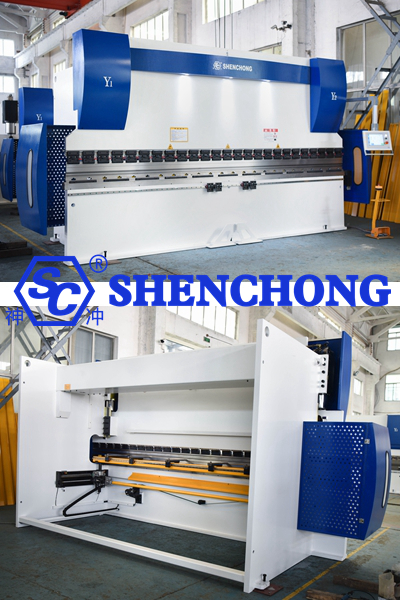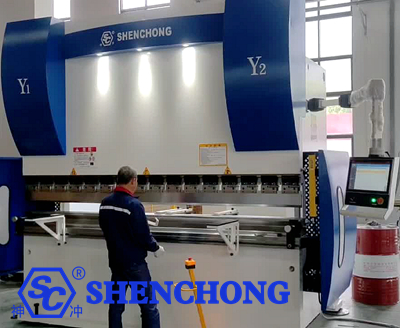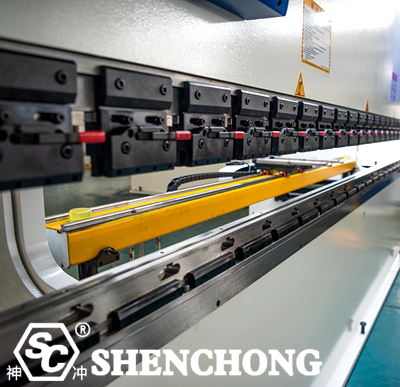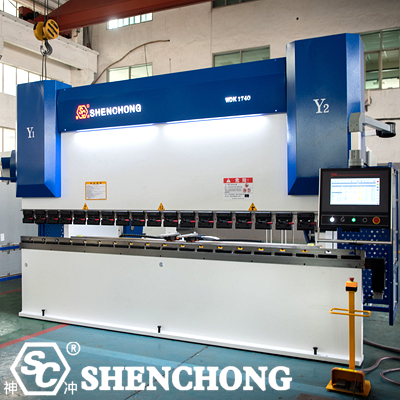
Skilled CNC press brake operation can not only improve production efficiency and product quality, but also save costs and improve safety for enterprises. Press brake machine is a kind of equipment used to bend metal sheets, which is widely used in manufacturing, construction, aviation and other industries.
Bending machine is an indispensable and important equipment in modern metal processing. Its efficient and precise processing capabilities provide support for the development of various industries.

CNC press brake machines not only improve production efficiency and product quality, but also provide important support for the innovation and development of modern manufacturing industry, and have significant economic and social value.
When using bending machines, beginners can follow the following steps to ensure safe and effective operation.
- Be familiar with the various components of the bending machine, including the control panel, bending tool, support table, etc.
- Read the operation manual to understand the technical parameters and usage precautions of the equipment.
- Wear appropriate personal protective equipment, such as safety glasses, gloves and protective shoes.
- Ensure that the work area is tidy and avoid debris interfering with the operation.
- Select the appropriate material and thickness and confirm that it is suitable for the specifications of the bending machine.
- Measure and mark the bending line to ensure the accuracy of the bending.
- Adjust the parameters of the bending machine according to the required bending angle and material thickness.
- Install the appropriate bending mold and ensure that it is firmly fixed.
- Before the formal operation, you can perform a trial bend to check the accuracy of the setting and the bending effect.
- Start the machine, move the bending tool slowly, and observe the reaction of the material.
Keep your hands away from the bending area to ensure safety during operation.
- After completing the bending, check the angle and quality of the bending and adjust it if necessary.
- If any problems are found, stop the machine in time for inspection and troubleshooting.
- After the operation, clean the equipment and perform regular maintenance to ensure that the machine is always in good condition.
Through these steps, beginners can use the bending machine more safely and effectively. In actual operation, it is best to be carried out under the guidance of experienced people to speed up the learning and mastering process.

Before operating a press brake, beginners need to understand the following key knowledge:
Understand the various components of the press brake, such as the machine body, bending tools (upper and lower dies), workbench and control system.
Understand how the press brake applies pressure to the metal sheet through the relative movement of the upper and lower dies to achieve bending.
Understand the characteristics and applicable scenarios of mechanical press brakes, hydraulic press brakes and CNC press brakes.
Understand the main functions of the press brake and its application in manufacturing, construction and other industries.
Be familiar with safety precautions, such as wearing personal protective equipment and avoiding hands approaching the bending area.
Understand the correct operating procedures, including setting up the machine, positioning the material, performing trial bends and inspecting the finished product.
Understand the thickness, strength and bending performance of different metal materials (such as aluminum, steel, stainless steel, etc.).
Master the best bending angle and method for different materials and thicknesses.
Learn how to adjust the pressure, speed and bending angle of the bending machine according to the material type and thickness.

Learn how to choose the right upper and lower molds to ensure that they are suitable for the processed materials and shapes.
Master how to use measuring tools (such as angle rulers, calipers, etc.) to check the accuracy of bending angles and dimensions.
Understand the quality requirements of finished products, including flatness, surface finish and dimensional tolerances.
Learn how to regularly inspect and maintain the bending machine to keep the equipment in good operating condition.
Understand common faults and their solutions, such as mold wear, insufficient pressure, etc.
Understand relevant environmental protection regulations and master methods of waste disposal and noise control.
Follow the safe operating procedures in the industry to ensure the safety of yourself and others.
By mastering these basics, beginners can be more confident in bending machine operation and ensure safe and efficient production.
The following steps and suggestions can be followed to use the bending machine correctly and efficiently:
Ensure that the operator has received professional training and understands the operating procedures and safety precautions of the equipment.
Check all parts of the bending machine before use, including the tool, control system and hydraulic system, to ensure that there are no faults.
Confirm that the type and thickness of the metal sheet used are suitable for the processing capacity of the bending machine.
Select the appropriate upper and lower molds according to the processing requirements, and ensure that the mold is suitable for the thickness and type of the processed material.
Set the corresponding machine parameters such as bending speed, pressure, etc. according to the material and bending angle.
Place the metal plate to be processed on the workbench, ensure that it is properly aligned and fixed to avoid displacement during the bending process.
Before the formal operation, you can perform a trial bend to confirm whether the settings are accurate and whether the bending effect meets expectations.
During the bending process, slowly lift the tool and observe the reaction of the material to ensure a smooth bending process and avoid excessive force.
Use an angle ruler or special tool to check the angle and size of the bend to ensure that it meets the requirements.
Check the flatness and surface quality of the bending edge to ensure that there are no cracks or deformations.
After each use, clean the work area and equipment to remove metal chips and oil stains.
Regularly check and maintain the hydraulic system, control system and tool to ensure the normal operation of the equipment.
Operators should wear safety glasses, gloves and protective shoes to prevent accidental injuries.
Always pay attention to the operating status of the machine during operation, avoid distraction, and ensure safety.
Record relevant data after each processing, analyze the processing effect, and summarize experience for future operation optimization.
By following the above steps, operators can effectively improve the efficiency of the press brake machine while ensuring the safety of operation and the quality of the product.
Proper maintenance and maintenance of the cnc press brake can extend its service life and improve work efficiency. Here are some key maintenance measures:
- After daily use, clean the metal chips and dirt on the surface of the machine tool.
- Clean the hydraulic system regularly to prevent oil and impurities from affecting performance.
- Check the oil level and oil quality of the hydraulic oil regularly and replace it if necessary.
- Check whether there are leaks in the oil pipes and joints.
- Regularly lubricate the moving parts to ensure smooth movement.
- Replace the lubricating oil regularly according to the manufacturer's recommendations.
- Regularly calibrate the accuracy of the bending machine to ensure the accuracy of its bending angle and size.
- Debug the machine to ensure normal operation.
- Regularly check the cables, switches and control panels to ensure that there is no wear or aging.
- Ensure good grounding to prevent electrical failures.
- Check each part of the machine before operation to ensure that it is not loose or damaged.
- Train operators to ensure that they understand safe operating procedures.
- Develop a regular maintenance plan, including replacement of wearing parts and comprehensive inspection.
- Record the details of each maintenance and repair to help track the status and history of the machine.
Through the above measures, you can effectively keep cnc press brake machines in good condition and ensure its long-term stable operation.

Bending machines can bend metal sheets quickly and accurately, greatly improving production efficiency and adapting to the needs of large-scale production. Modern cnc press brake machines are equipped with advanced CNC systems, which can achieve high-precision bending and ensure product consistency and quality. CNC press brakes can handle a variety of materials (such as aluminum, steel, stainless steel, etc.), adapt to different processing needs, and meet diversified industrial production.
Correct cnc press brake operation can reduce accidents and injuries and ensure the safety of operators. Correct operation and settings can improve bending accuracy, ensure that products meet design specifications, and reduce scrap rates. Standardized use and maintenance can reduce machine wear, extend the service life of bending machines, and reduce maintenance and replacement costs.
Correct operation methods can improve work efficiency, shorten production cycles, and meet market demand. Reduce material waste and rework caused by incorrect operations and reduce overall production costs. Through correct use training, improve employees' operating skills and professional literacy, and promote the overall ability of the team. By mastering and applying new technologies and methods, promote innovation and upgrading of production processes and improve the competitiveness of enterprises.